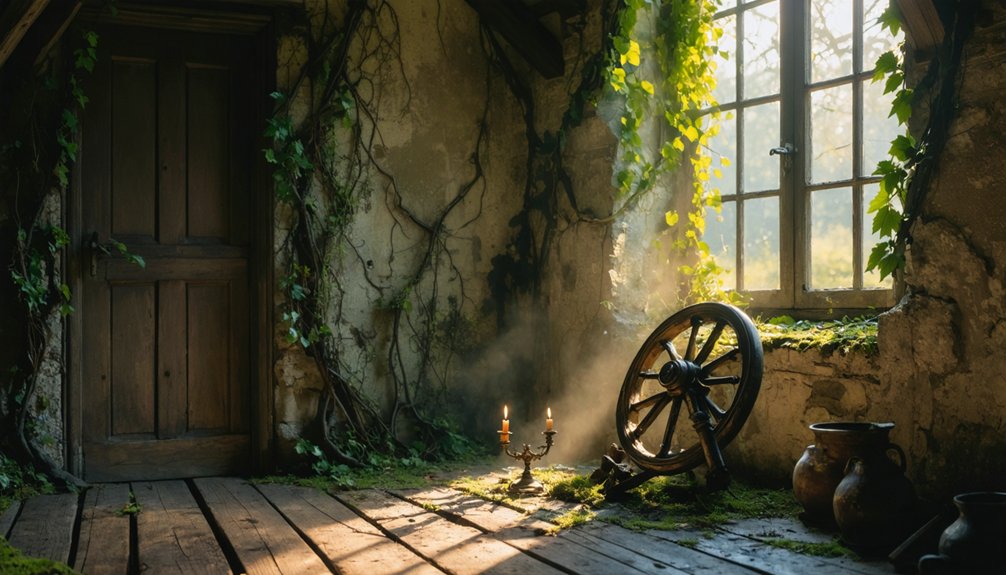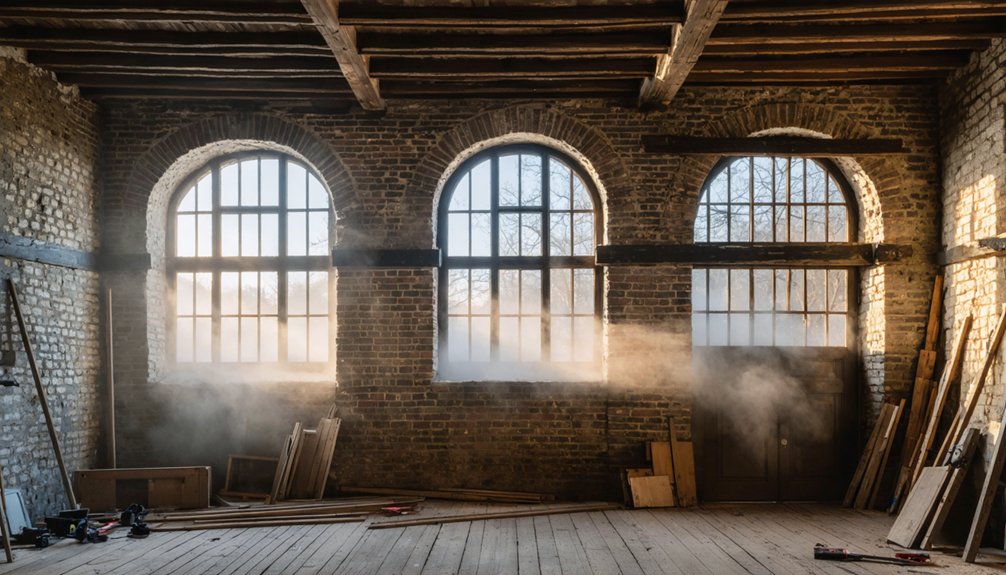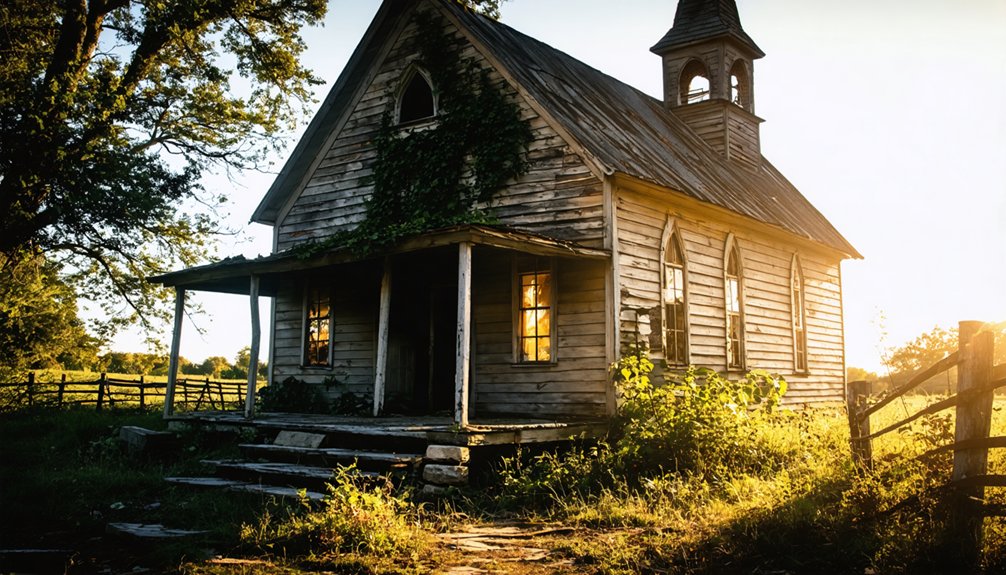When exploring abandoned colonial settlements, first research the site’s historical context (1565-1783) to understand its significance. Pack archaeological tools like a Marshalltown trowel and measuring equipment alongside safety gear. Always obtain proper permissions from landowners or tribal authorities, as many sites involve complex ownership. Document your discoveries with detailed photography and field notes. Connect with local historical societies to access archives and expert knowledge. These five practices will transform your exploration from casual sightseeing into meaningful historical investigation.
Key Takeaways
- Research colonial history from 1565-1783, focusing on architectural styles and indigenous interactions in different regions.
- Pack essential exploration gear including trowels, measuring tapes, documentation supplies, and safety equipment.
- Obtain proper permissions from landowners, historical societies, or tribal authorities before exploring abandoned sites.
- Document findings through photography, detailed notes, GPS coordinates, and sketches while practicing “leave no trace” ethics.
- Connect with local historical societies for access to archives, expert knowledge, and organized exploration opportunities.
Research Colonial History Before You Visit
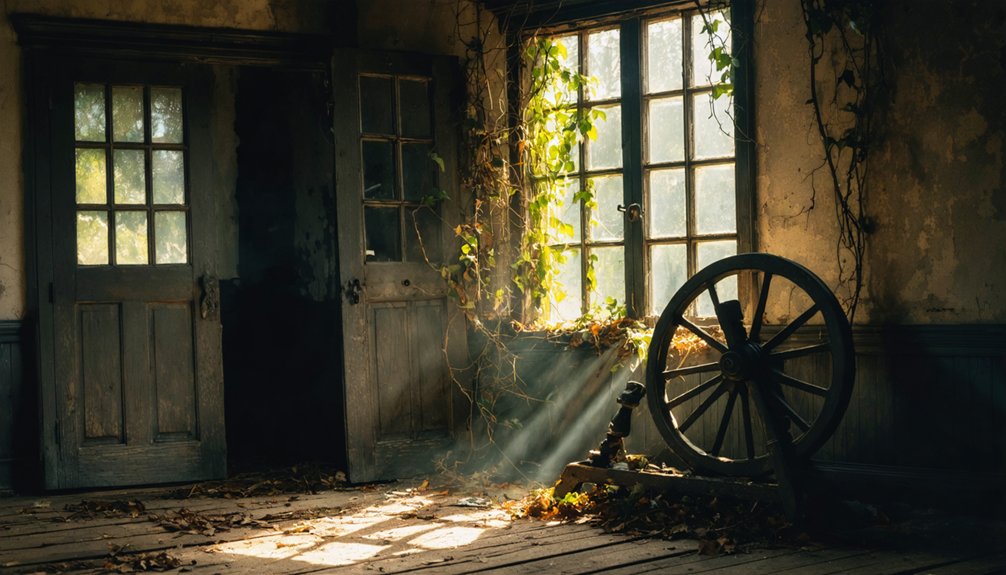
Before commencing any exploration of abandoned colonial settlements, you’ll need to develop a thorough understanding of America’s colonial past to fully appreciate these historical sites. Familiarize yourself with the timeline spanning from St. Augustine (1565) to the end of colonization (1783), noting how different European powers established distinct regional footholds.
When researching, pay special attention to colonial architecture differences between New England, Mid-Atlantic, and Southern settlements. Each region developed unique building styles reflecting their European origins and available materials.
Additionally, study indigenous interactions that often determined settlement survival—alliances with Native Americans proved essential for places like Plymouth, while conflicts contributed to failures like Roanoke. The Pequot War of 1637 resulted in devastating consequences for native populations and shaped colonial expansion patterns. The establishment of House of Burgesses in 1619 represents America’s first step toward representative government and influenced later political developments at many colonial sites. Understanding these dynamics will transform your visit from mere sightseeing into a meaningful historical immersion.
Pack Essential Gear for Archaeological Site Exploration
Armed with historical knowledge, you’ll now need proper equipment to examine these colonial remnants firsthand. Pack a Marshalltown 4-inch pointed trowel for controlled excavation techniques that preserve artifact integrity. Include square profiling and pointing trowels for varied soil conditions.
Documentation is vital for artifact preservation, so carry metric measuring tapes (both 3-meter and 30-meter versions), metal rulers, and photo scales. Don’t forget waterproof notebooks, Micron pens, and mechanical pencils for detailed field recordings. Remember to bring north arrows for proper site orientation in your documentation photos.
Protect yourself with waterproof hiking boots, work gloves, and kneepads—you’ll spend hours in close contact with the earth. Consider supplementing your footwear with brands like Georgia Boot Flxpoint for exceptional water resistance in wet excavation areas.
Finally, prioritize safety with at least 3 liters of water, hand wipes, sunscreen, and a thorough first-aid kit. Colonial sites often lack amenities, so self-sufficiency is essential for productive exploration.
Respect Legal Boundaries and Obtain Proper Permissions
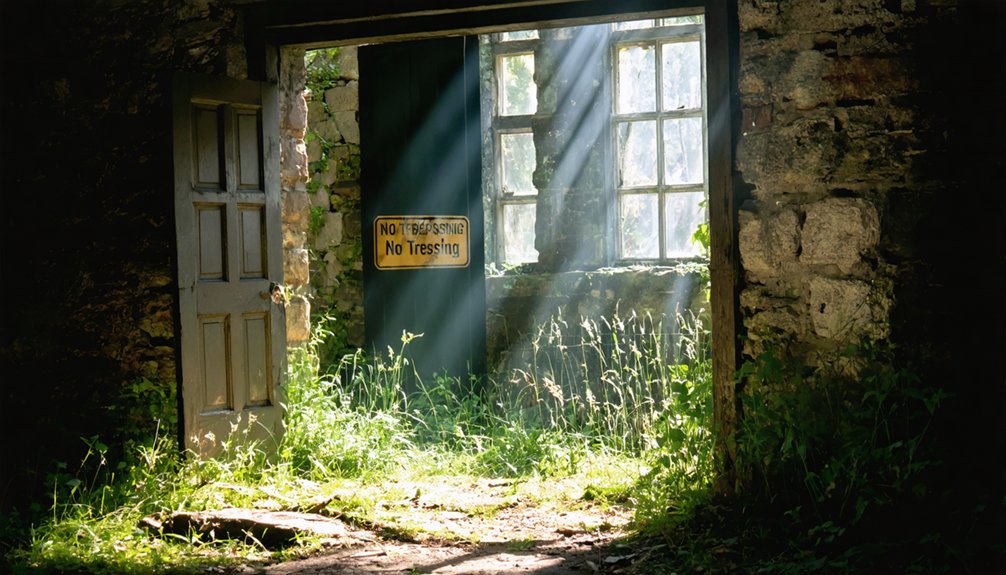
While exploring abandoned colonial settlements offers fascinating insights into America’s past, understanding the complex legal framework governing these sites is absolutely essential before your first visit.
Colonial-era property rights continue to shape today’s legal boundaries, often complicated by indigenous sovereignty claims that predate written records.
You’ll need to secure proper legal permissions from current landowners, whether private individuals, historic preservation organizations, or tribal authorities.
Don’t assume abandoned means unowned—trespassing penalties apply regardless of a site’s apparent condition.
Many of these sites were established through forced removal of Native peoples from their ancestral lands, with approximately 100,000 Native children separated from their families by government policies as recently as the 1950s and 1960s.
Remember that historic title registries served as colonial bureaucratic innovations that organized land claims and reinforced jurisdiction over contested territories.
Contact local historical societies and tribal governments to navigate jurisdictional complexities. When permissions are granted, respect all conditions attached.
Document Your Findings Through Photography and Notes
Once you’ve secured all necessary permissions, proper documentation becomes your next imperative—transforming fleeting observations into lasting historical records.
Employ photographic techniques that capture both context and detail: use manual exposure controls, experiment with light painting for shadowed interiors, and consider both color and black-and-white to convey different historical tones.
Frame compositions that reveal relationships between structures and landscapes, including human-scale objects that evoke past inhabitants. Document from multiple angles to create thorough visual records.
Pair images with meticulous note taking methods: maintain detailed logs of metadata, record structural observations not visible in photographs, and document oral histories encountered on-site.
Remember that early photography often concealed Indigenous presence while reinforcing colonial narratives about untouched wilderness.
Like Edward S. Curtis who created over two thousand prints, your documentation should be comprehensive but avoid romanticizing these abandoned spaces.
Organize your findings with consistent file naming systems that cross-reference photos with written observations, ensuring your exploration contributes meaningfully to historical understanding.
Connect With Local Historical Societies and Experts

The rich tapestry of colonial history comes alive when you tap into local historical societies and regional experts—resources that transform isolated exploration into collaborative discovery.
These societies maintain invaluable local archives containing unpublished manuscripts, maps, and primary source documents that reveal hidden settlement histories beyond what’s found in standard texts.
Schedule expert interviews with archaeologists and historians who possess specialized knowledge of regional settlement patterns and cultural interactions. They’ll provide essential context and may grant you access to excavation reports and artifact databases.
Additionally, participating in society events—lectures, workshops, and field trips—creates networking opportunities that often lead to collaborative research projects.
Don’t overlook the potential of society partnerships with universities and government agencies, which can connect you to broader historical networks and specialized resources for your abandoned settlement investigations. When studying early American sites, remember that some failed settlements like Roanoke in 1585 and the short-lived San Miguel de Gualdape represent important archaeological discoveries despite their brief existence. Researchers still debate the mysterious fate of the Lost Colony, possibly due to conflict with local Indians that left no survivors to tell their story.
Frequently Asked Questions
How Can I Identify Potential Colonial Artifacts Versus Modern Debris?
Examine artifact’s material characteristics, stratification, and manufacturing techniques. You’ll differentiate colonial artifacts from modern debris through patina development, elemental composition analysis, and typological features consistent with historical production methods.
Are There Seasonal Considerations When Planning Visits to Colonial Sites?
Plan your visits during spring through fall when seasonal weather is milder and sites offer full programming, but be prepared for higher visitor traffic during summer vacation months.
What Indigenous Territories Overlap With Colonial Settlement Locations?
You’ll find colonial settlements built on Lenape, Wampanoag, Massachusett, Pamunkey, Cherokee, and Haudenosaunee territories, with indigenous history revealing complex territorial boundaries that transcend today’s political borders.
How Dangerous Are Abandoned Colonial Wells and Structural Remains?
Like a lion concealed in tall grass, these sites are lethal threats. You’ll face extreme dangers from unstable well safety hazards and compromised structural integrity that can collapse without warning.
Can DNA Testing Link Modern Populations to Disappeared Colonial Settlers?
Yes, you can trace your genetic lineage to vanished colonial communities through DNA testing, which reveals historical migration patterns and ancestral connections despite limitations from degraded samples and complex population dynamics.
References
- https://www.learner.org/series/a-biography-of-america/english-settlement/timeline-colonial-settlement/
- https://en.wikipedia.org/wiki/Colonial_history_of_the_United_States
- https://www.firstcolonyfoundation.org/history/the-roanoke-colonies/
- https://www.npca.org/articles/3604-the-lost-colony-an-outer-banks-mystery
- https://en.wikipedia.org/wiki/British_colonization_of_the_Americas
- https://nationalhumanitiescenter.org/pds/amerbegin/settlement/settlement.htm
- https://www.youtube.com/watch?v=tnUYShPkTX4
- https://www.gsa.gov/real-estate/historic-preservation/explore-historic-buildings/explore-by-timeline/colonial-america-revolution-15651783
- https://www.gilderlehrman.org/history-resources/online-exhibitions/timeline-colonization-and-settlement-1585-1763
- https://en.wikipedia.org/wiki/Timeline_of_Colonial_America
